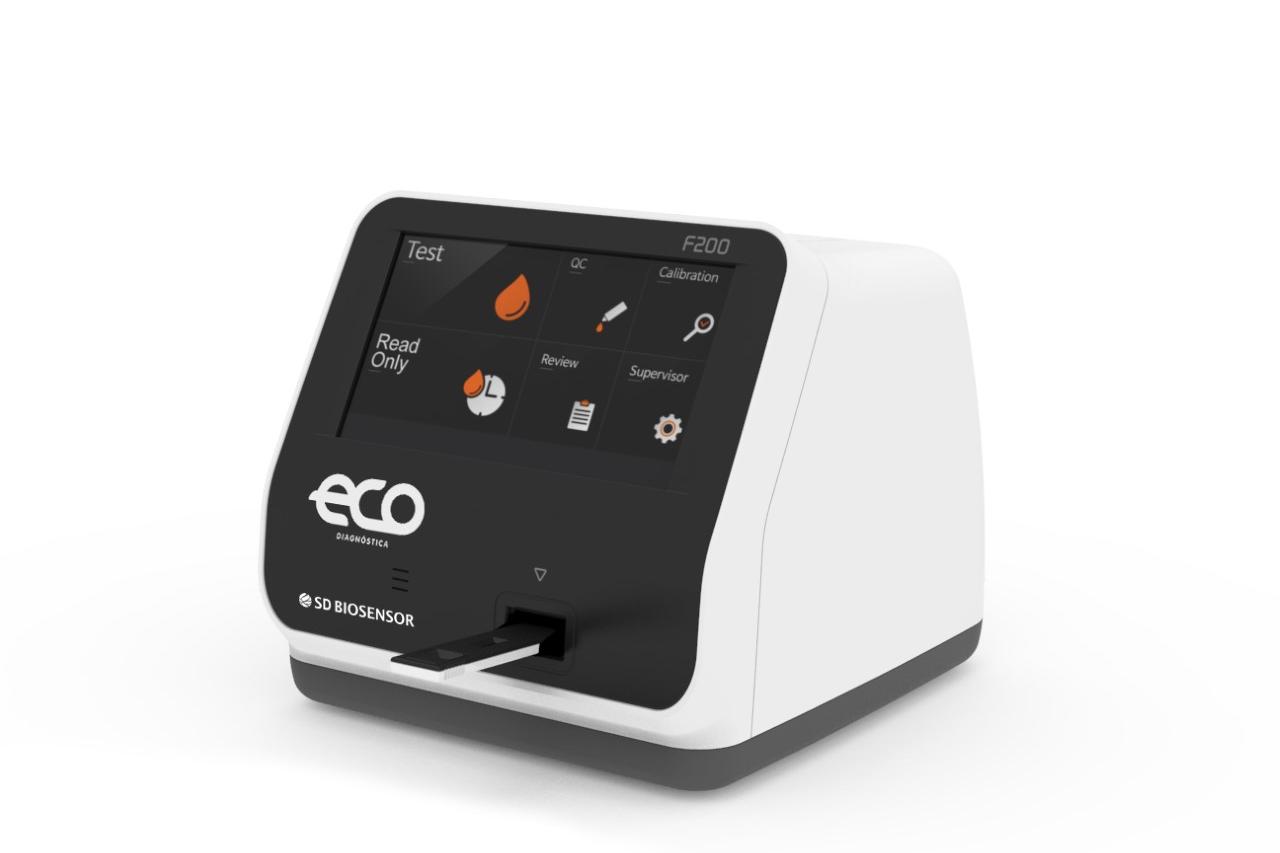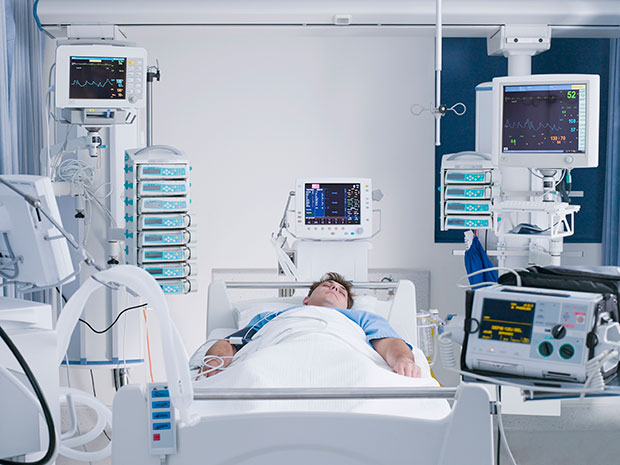RIO DE JANEIRO, BRAZIL – The limited number of tests to confirm coronavirus cases in Brazil hinders the realistic assessment of the evolution of the disease in the country, which officially accounts for 2,201 confirmed cases and 46 deaths as of Wednesday, March 25th.
The number of tests currently available is insufficient, given the size of the Brazilian population, and the country has had to choose which cases it would prioritize to apply them. If at first patients with milder flu symptoms could be tested more easily, now the recommendation on both the public and private networks is to test only the most acute cases.

Nevertheless, demand has increased so dramatically in recent weeks that the time between collection and test results has also increased. There are reports of people waiting up to seven days to learn whether or not they are infected, a procedure that would technically take only four to ten hours to process.
With this gridlock, the data known in Brazil is only the tip of an iceberg likely to be much larger of infections, which can spread the virus despite showing no symptoms. And they provide a constantly lagged epidemiological picture, since the delays in testing lead to a delay in the notification of cases and directly impact the statistics with which governments work to contain the spread of the coronavirus.
International experience has shown that nations adopting mass population testing, such as South Korea and Germany, have succeeded in better controlling the epidemic. After the World Health Organization (WHO) recommended that countries carry out mass testing, the Brazilian federal government said last week that the country was not in a position to do this. However, this week it announced measures to expand its testing capacity to a larger portion of the population.
In recent days, National Health Agency ANVISA approved just over a dozen new types of tests to diagnose the Covid-19, and the Ministry of Health announced on Sunday, March 22nd, the purchase of ten million rapid tests from a Chinese supplier. On Tuesday, March 24th, it said it would increase the number of tests available to 22.9 million.
The volume of tests purchased concerns direct purchases, donations and public-private partnerships. Part of these tests, 14.9 million, will be used to test inpatients and people with mild symptoms by sampling – the most complex type of test, which requires laboratories for analysis; the remainder is the so-called rapid test, which will be used for screening in a number of emergency rooms and for public safety and health professionals.
“We follow WHO guidelines. And we are following them this way,” said Wanderson Oliveira, Health Surveillance Secretary at the Ministry of Health, on Tuesday.
The trouble is that the solutions presented so far are incapable of embracing the need of a country with 210 million inhabitants. Moreover, there is no estimate of when this reinforcement in testing will be available in health facilities.
On the one hand, there is a challenge to deliver promptly in a scenario of depleted supplies in the world. The Government is still negotiating with several suppliers, for instance. On the other hand, these tests must be validated in the country and checked for reliability before they are applied on a large scale, according to infectologists.

Analysis tool
The test to diagnose the coronavirus brings no significant changes to the individual treatment of Covid-19 patients, since the disease is new and there are still no specific drugs to fight it. A patient with mild flu symptoms should be treated at home under isolation to prevent contamination of other people.
However, mass testing is critical because it produces the required data to observe how the disease is advancing in the country, the real mortality rate, the features of the most affected groups and, consequently, the measures and guidelines to be taken by the authorities to contain the spread of the virus and prevent many people from getting sick at the same time, thereby collapsing the health system.
“From the moment we only test hospitalized patients, we only see the tip of the iceberg. Large-scale testing would provide a better insight into how to foster more effective isolation measures (to slow down contagion). Unfortunately, in Brazil, we do not have this technical capacity today,” says infectologist Carol Lazari, chief physician in the molecular biology sector at the Clínicas Hospital.
The tests currently performed in Brazil are the so called RT-PCR, more complex and performed in a laboratory. Typically, health facilities collect respiratory samples from patients to analyze if there is a genetic presence of the coronavirus.
Larger hospitals (such as the private Albert Einstein, in São Paulo) have a laboratory structure to perform this internally , but smaller hospitals still need to send samples to reference laboratories in the state.
The waiting time for the result occurs along the testing chain: from the collection of the material in hospitals, which are now facing patient overload, to the testing processing line, which requires skilled labor and more complex analysis.
According to the Ministry of Health’s Secretary of Health Surveillance, the country has the daily installed capacity to process 6,700 tests, but this structure is shared with the analysis of other diseases, such as dengue and HIV, for instance. “To cope with the peak of the epidemic, we need to achieve a range of 30 to 50,000 tests per day,” Oliveira says.
The government is currently attempting to purchase more machines, each capable of processing 1,000 tests per day. “Collecting the material, gathering the samples of the day, carrying everything to Adolf Lutz (one of the reference laboratories) takes time.
The facilities send them in and then they get in line for processing. For smaller hospitals, that’s the routine. The bigger ones can already perform the tests themselves, and that speeds things up”, explains doctor Fernando Belíssimo, from Campinas’ Clínicas Hospital.
The statistical collateral effect is that governments have partial and even lagging data that may be masking the magnitude of the problem. “The slow pace of tests has an impact because we are always looking at a picture of the past, not in real time. This makes it difficult to analyze the behavior of the epidemic. There are people dying before being diagnosed, which can lead to the epidemic being underestimated,” says Fernando Belíssimo.
In Rio de Janeiro, for instance, the average testing time has been up to six days, the government concedes. The State accounts for six deaths from coronavirus, but by Tuesday, March 24th, there were ten deaths under investigation.
However, the doctor of the Campinas Clínicas Hospital believes that the discussion of testing is not easy. First because there is a worldwide supply depletion and then because they are expensive.
“The government has been trying to optimize its testing capacity. We’re not Switzerland and I don’t know if we have mass testing capacity,” the doctor says. And adds: “From the perspective of disease control, as long as you really respect it, quarantine should make up for what we lose without mass testing”.
In any event, these limitations prevent a more accurate mapping of the development of the epidemic in the country and an assessment of the impacts of the mitigation measures already in place.
“It is difficult to gauge the height of this curve. If we are only testing the critical cases, this calls into question the scale of the problem we are facing. We need a more accurate picture to determine what is to come,” says Carol Lazari.
The Ministry itself concedes that the data are lower than the true picture. “Of every 100 coronavirus patients, we were able to pinpoint 14. In other words, 86 percent of infected people are not identified,” says João Gabbardo dos Reis, executive secretary at the Ministry of Health. However, he believes this is the average observed in other affected countries alike. By this account, the country would today have, not the 2,201 cases disclosed by the Ministry on Tuesday, but something close to 15,721 cases.
Brazil is now working to ensure faster testing. PCR is more complex and precise, but there are other options, such as tests that, rather than identifying the genetic load in the respiratory material, detect the presence of antibodies in the patients’ blood. There is a low level of detection in the first days of the disease, so there is a relevant window on its accuracy.
The ten million rapid tests announced by the government include such tests. “They should be useful, but they need to be assessed and validated in Brazil,” explains the infectologist. It is necessary to observe how well these tests are able to detect the disease and to determine whether they give false positives (in the medical vocabulary, the sensitivity and specificity of the tests, respectively).
With the government and researchers’ task force, Lazari believes that this procedure would not take long.
There are other tests recently licensed by the ANVISA that could help Brazil, some as basic as a drugstore pregnancy test. The point is that there are suppliers of fast test equipment that can only deliver the tests in late April and early May.
“They all need to undergo a technical assessment before distribution because, without knowing the exact reliability, they could be more confusing than helping,” Lazari alerts. Even in PCR tests, which are more reliable, there are reports of false negative results. The question is new, so there is a need to be cautious about the tests that will be distributed on a large scale.

In any event, and in order to expand this diagnostic capacity, a slightly more precise development of the infection in the country has been designed. The government says it is working with the assumption that Brazil is one of the countries with the most confirmed cases because it intends to significantly expand this testing capacity. And thus it will also have a mortality rate closer to reality.
Number of ICUs, in comparison
Regarding the readiness of intensive care units (ICUs) to attend the most critical Covid-19 patients, the executive secretary of the Ministry of Health, João Gabbardo, states that the Brazilian ICU structure is prepared to receive the demand caused by the coronavirus in the coming weeks.
According to him, Brazil has a rate of 2.62 ICU beds per 10,000 inhabitants. The number is much higher than countries like Italy (0.83) and France (1.05), according to data from the Ministry of Health.
“People often don’t realize that we have a single robust health system that is prepared for adverse situations. Our amount (of ICU beds) is adequate for the demands to date. From now on, we will need to make adjustments,” he says.
He adds that Germany, the country outside the European curve with low coronavirus mortality, has a rate of 3 ICU beds per 10,000 inhabitants. “Brazil is prepared, and we are going to greatly extend it. We will likely have more beds than France has today,” projects Gabbardo, who acknowledges difficulties, but says he will not let the the public health service SUS be demoralized while reiterating the robustness of the Brazilian system.
However, the Government is unable to answer what percentage of the available ICU beds is currently filled by suspected or confirmed coronavirus infection patients.

